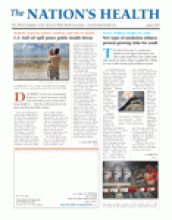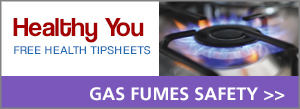Some sun-sensitizing medications tied to cataracts
Sun-sensitizing medications may interact with sun exposure to raise the risk of one type of cataracts, a recent study found.
Published online June 14 and appearing in the August print issue of Archives of Ophthalmology, the study found that the risk of cortical cataract, a common age-related eye condition, was significantly higher among people who had spent the most time in the sun and had taken photosensitizing medications such as diuretics, antidepressants, antibiotics and the pain reliever naproxen sodium. Wearing brimmed hats or sunglasses did not affect the risk of developing cataracts.
The study was based on about 5,000 people living in Beaver Dam, Wis., and first examined between 1988 and 1990.
“Our results need to be evaluated in other populations, especially in view of the increasing frequency of sun-sensitizing medications,” the study’s authors wrote.
About 24 percent of people reported taking such medications at the beginning of the study, but the number had jumped to almost 45 percent at the 15-year follow-up.
Human behavior plays role in emerging infections
Human behavior can powerfully influence the emergence of infectious disease in both people and animals, according to a recent study.
Published in Frontiers in Ecology and the Environment, the study examined how different human behaviors influence disease transmission between domestic dogs and the endangered African wild dog in Kenya and Botswana. The domestic dog is thought to be the primary source of canine diseases leading to the decline of wild dog populations in Africa.
The study found that the majority of domestic dogs in Kenya spend the day with grazing cattle and herders, while most domestic dogs in Botswana remain in the village because cattle are typically allowed to graze unattended. As a result, the disease mortality rates among African wild dogs are much higher in Kenya because of the contact with domestic dogs.
“By promoting infectious disease emergence, human behavior may be the key that unlocks the proverbial Pandora’s box, allowing infectious diseases to emerge,” said study lead author Kathleen Alexander, DVM, PhD, of Virginia Tech’s College of Natural Resources. “What people do and how they do it in their environment will strongly shape the risk of pathogen exposure. We need to better understand human culture and behavior in this context so we are better able to predict where the next pandemic might begin. At present, we can only wait for the next outbreak.”
Free clinics care for 2 million Americans
Almost 2 million people make 3.5 million medical and dental visits to free clinics each year in the United States, according to a study in the June 14 Archives of Internal Medicine.
“Free clinics operate largely outside of the safety net system,” the study’s authors wrote. “However, they have become an established and meaningful contributor to it. Policy-makers should consider integrating the free clinic network with other safety net providers or providing direct financial support.”
The study surveyed the nation’s 1,007 free clinics in 49 states and the District of Columbia between October 2005 and December 2006. The clinics were open an average of 18 hours a week and generally provided chronic disease management, physical exams, urgent and acute care, and medications. Almost 60 percent of the clinics received no public funding.
The study found free clinics provide a range of preventive and general medical care for about 10 percent of the working-age adult uninsured population who seek care.
“Throughout their history, free clinics have served as gap-fillers, targeting patients who are under-served by mainstream medicine,” the study’s authors wrote. “Free clinics suggest an alternative model of primary care to the under-served, and the merits of the free clinic model ought to be discussed as viable options to serve the uninsured.”
- Copyright The Nation’s Health, American Public Health Association









